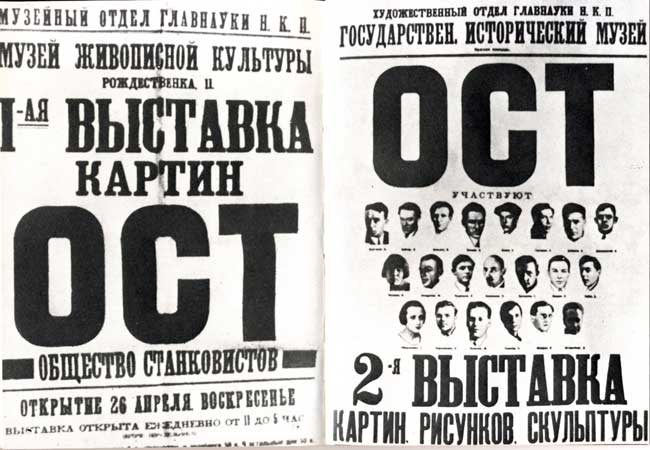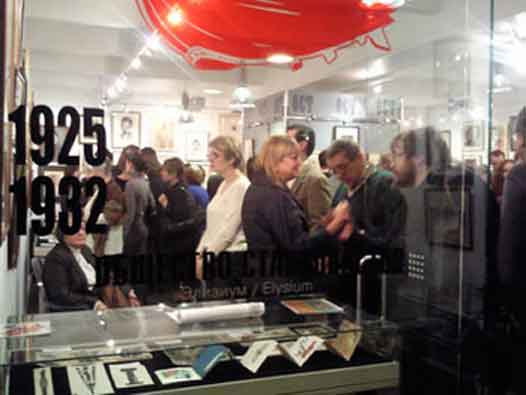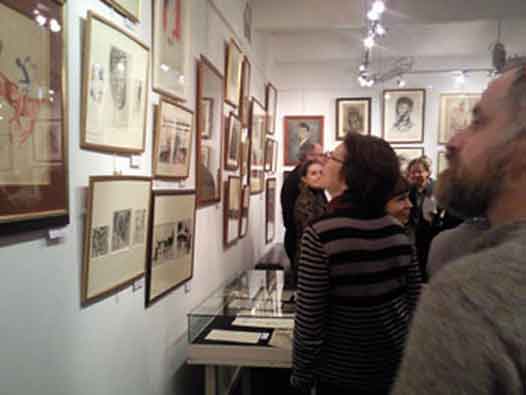OST - The Society of Easel Painters - Obschestvo Stankovistov - ОСТ - Общество Станковистов
1925 - 1932, Member List
The OST movement was founded in 1925 in Moscow. Its founders were a group of VKhUTEMAS students, who had studied in David Shterenberg's workshop. Among the founders were: Yu.Annenkov, A.Deineka, P.Williams, N.Denisovsky, S.Kostin, A.Labas, Yu.Pimenov and D.Shterenberg, who was chosen as chairman. The nucleus of this movement has formed following the "First discussion exhibition of the unions of active revolutionary art", which has taken place in 1924. It included members of the following three groups:
- Projectionism: S.Luchishkin, S.Nikritin, K.Red'ko, N.Tryaskin, A.Tyshler;
- Concretivism: P.Wiliams, K.Vialov, V.Lyushin, Yu. Merkulov;
- Group of the Three: A.Deineka, Yu.Pimenov; A.Goncharov.
At the time a passionate debate was going on about the nature of art; its purpose; its place in society; the role of the artist. Many artistic movements and groups actively sought to distance themselves from the pure art, from easel and and painting, and to direct their activity in the industrial arena. The artists of the forming OST group were opposed to that outlook, and to further stress their opposition the name of the group was chosen to reflect their approach: Obschestvo Stankovistov (the Society of Easel-Painters). The purpose these artists have assigned for their art was reflecting of the typical Soviet reality in various aspects of life. The document, kept in the Shterenberg family archive, states:
"Society purpose and rights:
The Society of Easel-Painters (OST), whose activity is to be expressed through organizing periodic art exhibitions, announces the following slogans, which it accepts as guidelines in the current conditions:
- Aspiration towards absolute professionalism in the objective easel painting, drawing and sculpture, in step with the process of formal achievements development of the latest years.
- Striving to achieve a complete painting.
- Maintaining the Revolutionary and contemporary clarity in choice of subject.
- Renouncing sketchiness, as the exposure of masked dilettante tendency.
- Renouncing pseudo-Cezanninsm, as the destroyer of form, drawing and color.
- Renouncing Non-objectivism, as manifestation of irresponsibility in art.
- Renouncing abstractness and itinerancy in the subject.
- Creating orientation for artistic youth.
- Attracting non-Russian masters of painting, drawing and sculpture to participate in OST exhibitions."
The organization manifest, accepted in 1929 stated: "At the age of building of Socialism, active artistic forces must be a part of this building and one if the factors of cultural revolution in the areas of reformation and design of the new life, and the creation of new, socialist culture".
Despite the name of the movement, its members did not only deal in easel painting. Most of them created monumental painting, produced posters, illustrated books and magazines and made designs for theatre productions.
The movement organized numerous exhibitions in Moscow, all-Russian and abroad.

Announcements of the 1st and the 2nd exhibition of the OST group.
In 1928 the movement has formed into two groups, following a disagreement in the artists creative ideology. The first group wanted to focus on reflecting urban and industrial life, technological progress, sports and youth, in clear graphic dynamic manner. This group included P.Wiliams, A.Deineka, S.Luchishkin, Yu.Pimenov and others. The second group preferred a more free style of expression, preferring colorful lyrical manner to rational organization of a painting. This group was centered around D.Shterenberg, and included A.Goncharov, A.Labas, A.Tyshler, N.Shifrin and others.
In a short time these professional debates between the two groups of the OST movement developed into political disagreements, and the first group has broken away from OST and formed a new organization, called "Izobrigada".
The OST movement ceased to exist in 1932, with the creation of Moscow branch of the Union of Soviet Artists and the order to disband all artistic groups and movements. Now the state was the only one who could make orders, organize large exhibitions, dedicated to the country's industrialization. It commandeered the artists to paint building industrial sites across country and the portraits of record-breaking workers.

Entrance to "Elysium" Gallery exhibition, February 17th, 2009.
In February-March 2009 an exhibition was held at the "Elysium" gallery in Moscow by the name "Grafika Obschestva Stankovistov" (Graphic works of the Society of Easel-Painters). There were 242 works shown, including easel work, book illustrations and theatre designs, from the collections for RGALI, the State Tretyakov Gallery, the Bakhrushin State Theatre Museum and private collections.

"Elysium" Gallery exhibition hall, February 17th, 2009.
Photographs courtesy Russian Archives, website: www.rusarchives.ru
